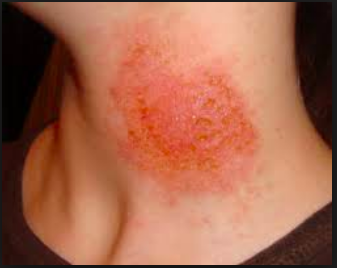

J Plant Nutr 29:127–136Ĭhmielowska-Bąk J, Lefèvre I, Lutts S, Kulik A, Deckert J (2014) Effect of cobalt chloride on soybean seedlings subjected to cadmium stress. Commun Soil Sci Plant Anal 36:1931–1945Ĭhatterjee C, Gopal R, Dube BK (2006) Physiological and biochemical responses of French bean to excess cobalt.

Plant Sci 164:793–801Ĭhatterjee J, Chatterjee C (2005) Deterioration of fruit quality of tomato by excess cobalt and its amelioration. Environ Pollut 109:69–74Ĭhatterjee J, Chatterjee C (2003) Management of phytotoxicity of cobalt in tomato by chemical measures. J Plant Nutr 20:805–811Ĭhatterjee J, Chatterjee C (2000) Phytotoxicity of cobalt, chromium and copper in cauliflower. Trace Subst Environ Health 6:15Ĭaselles JM, Pérez-Espinosa A, Pérez-Murcia MD, Moral R, Gómez I (1997) Effect of increased cobalt treatments on cobalt concentration and growth of tomato plants. Acta Agric Slov 87:435–444Ĭase AA, Selby LA, Hutcheson DP, Ebens RJ, Erdman JA, Feder GL (1972) Infertility and growth suppression in beef cattle associated with abnormalities in their geochemical environment. Agron Res 6:15–25īasu M, Bhadoria PBS, Mahapatra SC (2006) Influence of microbial culture in combination with micronutrient in improving the groundnut productivity under alluvial soil of India. Fed Proc 20:956īasu M, Bhadoria PBS (2008) Performance of groundnut under nitrogen fixing and phosphorous microbial inoculates with different levels of cobalt in alluvial soils of eastern India. Nucl Instrum Methods Phys Res B 23:350–356īarker HA (1961) Structure and function of cobamide coenzymes. Plant Sci 166:3–6īakkaus E, Gouget B, Gallien JP, Khodja H, Carrot H, Morel JL, Collins R (2005) Concentration and distribution of cobalt in higher plants: the use of micro-PIXE spectroscopy. Acta Physiol Plant 34:2007–2017Īshraf M, Harris PJC (2004) Potential biochemical indicators of salinity tolerance in plants. Aust J Agric Res 24:557–571Īrora P, Bhardwaj R, Kanwar MK (2012) Effect of 24-epibrassinolide on growth, protein content and antioxidative defense system of Brassica juncea L. Hort Environ Biotechnol 54:465–474Īnderson AJ, Meyer DR, Mayer FK (1973) Heavy metal toxicities: levels of nickel, cobalt and chromium in the soil and plants associated with visual symptoms and variation in growth of an oat crop. Commun Soil Sci Plant Anal 31:1275–1286Īkbar FM, Zafar M, Hamid A, Ahmed M, Khaliq A, Khan MR, Rehman ZU (2013) Interactive effect of cobalt and nitrogen on growth, nodulation, yield and protein content of field grown pea. KeywordsĪerya NC, Jagetiyaa BL (2000) Effect of cobalt treatments on dry matter production of wheat and DTPA extractable cobalt content in soils. Although there are reports that confirmed, the toxicity of Co could be alleviated by exogenous supply of calcium, phosphorus and some plant growth regulators. Higher levels of Co also lead to chlorosis and necrosis and inhibition of root formation, hindering the nutrient translocation and water uptake. At higher levels, Co is known to decrease the formation of nodules, resulting in reduced development and crop yield. Besides beneficial impacts on plant life, cobalt has some unfavourable effects too. Some studies show that Co plays a significant role in ethylene production in plants. Other positive impacts include stem development, coleoptile elongation, bud formation, plant growth enhancement and yield when exogenously applied.

Its role in accelerating the nitrogen fixation in legumes is now well established. Cobalt, a critical cobalamin component, is needed for several enzyme and coenzyme operations. In this chapter, the impact of Co in plant life is reviewed along with stress caused by this metal and ways to overcome its detrimental effects. However, if their level increased, it leads to toxicity and often has adverse effects on plant life. When present in iota amounts, metals such as copper (Cu), cobalt (Co), manganese (Mn), chromium (Cr) and zinc (Zn) are essential to plant metabolism and play a significant role in plant growth and productivity. Out of these, some of the heavy metals are substantial environmental pollutants and produce toxic effects which create ecological havoc. Several metals modulate and monitor growth in addition to physiological as well as biochemical processes in plants.


 0 kommentar(er)
0 kommentar(er)
